Any diabetic will tell you that the hardest thing to do is deciding the kinds of foods that they should eat so as to remain healthy and maintain stable blood sugar levels.
The goal of every diabetic is to ensure that they maintain their blood sugar levels at a rate that can easily be controlled.
Well, other than working on maintaining stable blood sugar levels it is also very important to ensure that you take foods that which will help you reduce the risk of contracting heart diseases.
The following are some of the best foods safe to the consumer by people with both type 2 and type 1 diabetes.
-
Fatty Fish
Fish and in particular the fatty fish happens to be the healthiest food you can ever consume.
Examples of fatty fish include herring, salmon, mackerel, anchovies, and sardines. All these fish are rich in the very crucial Omega-3 fatty acids as well as EPA. All these components are essential for people living with diabetes.
Omega-3 fatty acids are particularly useful since it reduces the risk of contracting stroke and other chronic heart diseases.
Fish are also rich in proteins and in this case proteins of the highest quality this will make you full and in the process increase your body metabolic rate.
My verdict on this is that the omega-3 fatty acids play a major role in preventing chronic diseases associated with the heart as well as reduce inflammation.
-
Leafy Greens
Vegetables are relatively low when it comes to calories but have a very high nutritious value.
Carbs have an adverse effect on the body’s blood sugar levels and leafy greens happen to be low in this component.
Examples of good sources of leafy greens are kale, spinach you can also add in any other source but these two are the major ones and are the main source of minerals and vitamins.
One the studies actually indicated that when you increase your intake of Vitamins C, chances are that you will reduce your fasting blood glucose levels and inflammation. This is particularly useful if you have high blood pressure or type 2 diabetes.
That’s not all when you consume leafy greens, you will be adding zeaxanthin and antioxidants lutein in your body.
Most diabetic people eye problems, consuming leafy greens ensures that your eye is protected from cataracts and macular degeneration.
My verdict: as a diabetic you should increase your intake of green leafy vegetable to get vital nutrients and antioxidants which help prevent chronic diseases and eye problems a very common issue among the diabetic.
-
Cinnamon
There is no shadow of doubt in the fact that cinnamon is one very delicious spice and rich in antioxidants.
Studies have actually indicated that you can lower your blood glucose levels and increase insulin sensitivity by consuming cinnamon.
These studies measure the hemoglobin A1c in the body for a period of 3-4 months so as to determine the average blood glucose levels of the test subjects.
In one study where people with type 2 diabetes were used as test subjects. Those who actually took cinnamon for a period of 90 days showed a significant reduction in the hemoglobin A1c levels when compared to the control group.
In an analysis that included 10 studies, it was found that cinnamon plays a major role in lowering levels of bad triglyceride and cholesterol in the body.
There is, however, no significant evidence to support the fact that cinnamon actually has health benefits to the adolescents living with type 1 diabetes.
You should, however, limit the amount of cassia cinnamon you take to at least one teaspoon in a day.
You should however not take coumarin in high doses since it’s linked with serious health issues.
This is not something that you should worry about is you take cinnamon after all true cinnamon has little to no coumarin.
My verdict on this is that so as to improve your blood glucose levels, increase insulin sensitivity, lower levels of bad cholesterol and triglyceride in the body then you should consider increasing your intake of cinnamon.
-
Eggs
If you want to say full for a long time while at the same time get essential nutrients then the best choice to go with is eggs.
Most diabetic people are at the risk of developing heart complications, well if you consume eggs you will reduce the risk of contracting a heart disease by a significant percentage.
When you take eggs you will also decrease inflammation in your body, increase insulin sensitivity, increase levels of good cholesterol while at the same time reduce bad cholesterol.
One of the studies actually showed significant evidence supporting the fact that when you consume at least eggs in a day there will be improvements in your blood glucose levels as well as cholesterol levels.
You will also be providing your body with antioxidants, zeaxanthin, and lutein all which helps in protecting the eyes from any chronic disease.
It is also important to note that the most nutritious part of the egg is the yolk rather than the white part.
My verdict: Eggs you will help you stay full for long, give protection to your eyes, help maintain stable blood glucose levels and reduce the risk of contracting chronic disease an issue very common with people with diabetes.
-
Chia Seeds
This is always a healthy option if you are diabetic. These seeds are high in soluble fiber and low in carbs.
Whereas you get 11-12 g of carbs in a serving of chia seeds the same will give you 28grams of fiber. This fiber will help you maintain stable blood glucose levels.
You can also consume chia seeds as a way to reduce weight. The high fiber ensures that you stay full for long meaning that you won’t have to eat every now and then. The fiber also slows down the absorption of calories in the body.
On top of all that, Chai seeds also help in reducing blood pressure as well as inflammatory in the body.
My verdict: when you consume chia seeds you will get high fiber content, low carbs and it will decrease your blood pressure as well as inflammation.
-
Turmeric
This being a spice contains an ingredient by the name curcumin that plays a major role in lowering inflammation, blood glucose levels and reduces the risk of contracting chronic heart disease an issue very common among the diabetic.
As we all know, most diabetic people are prone to kidney problems. Curcumin an active ingredient in turmeric helps in improving your kidney health.
You should however not consume turmeric on its own since curcumin is not absorbed effectively. To boost the absorption consume it with black paper.
My verdict: Curcumin is an active component in turmeric that plays a major role in reducing blood glucose levels, inflammation while at the same time reducing the risk of contracting kidney and heart chronic diseases.
-
Greek yogurt
When it comes to a dairy choice a Greek yogurt is always a healthy option. Greek yogurt contains probiotics which help in maintaining stable blood sugar levels and reducing the risk of contracting a heart disease.
Studies have also shown significant evidence supporting the fact that consuming Greek yogurt helps in improving our body composition and weight loss which is a major issue among people with diabetes.
This is highly attributed to the high calcium content g and CLA (Conjugated Linolic Acid). In a serving of Greek yogurt, you will only get 6-8g of carbohydrates. This is low compared to the normal conventional yogurts. This yogurt is also high in proteins and this ensures that you stay full for long and in the process helps in promoting losing excess weight.
My verdict: when you take Greek yogurt this will help you manage your weight, maintain controlled blood sugar levels and reduce the risk of contracting chronic diseases.
-
Nuts
Nuts are not only delicious but are also nutritious! Almost all types of nuts are high in fiber and low in carbs. The following is a list of the number of digestible carbohydrates in a single serving various nuts.
- 4 grams in Brazil nuts
- 6 grams in almonds
- 7 grams in cashews
- 2 grams in hazelnuts
- 2 grams in pecans
- 5 grams in pistachios
- 2 grams in walnuts
Studies have also indicated that if you consume nuts on a regular basis this will help reduce levels of inflammation, blood glucose levels and LDL and HbA1c levels.
One of the studies that used people living with diabetes as test subjects were asked to include 30g of walnuts as part of their day to day diet for a period not less than 1 year. Notable weight loss was detected, reduction of insulin levels in the body and the body composition changed for the better.
Research has shown that high insulin levels are the major reason for increased cases of cancer and Alzheimer’s disease.
My verdict: there is no shadow of a doubt that nuts are always a healthy option for you as a diabetic. They are low in carbs, helps in reducing blood glucose levels, LDL levels as well as insulin levels.
-
Broccoli
This is a vegetable and highly recommended for its nutritious value. In ½ a cup serving of broccoli that has already been cooked there are 27 calories and only 3g of digestible carbohydrates. There are also other essential nutrients such as magnesium and vitamin C.
Recent studies have shown that consuming broccoli helps in lowing levels on insulin in the body and in the process ensures an efficient metabolism one that is free from any harmful free radical.
You will also get a good share of zeaxanthin and lutein when you consume broccoli all which helps reduce the risk of contracting eye problems an issue very common among the diabetic.
My verdict: broccoli happens to a very nutritious vegetable one that is low in carbs and calories. Always a healthy option for a diabetic!
-
Extra-virgin olive oil
This is particularly beneficial for the health of your heart. Extra- virgin olive oil contains monounsaturated fat in particular oleic acid that helps increase levels of good cholesterol and triglycerides. The levels of the two are usually very low for people living with diabetes.
An analysis was done on more than 32 studies all which studied various types of fats. In the analysis, it was found that it was only olive oil that showed significant evidence in helping reduce the risk of contracting a heart disease.
When you take olive oil you will also get polyphenol which is an antioxidant that helps reduce inflammation, reduce levels of bad cholesterol, and reduce the burning sensation as a result of oxidation in the process reducing blood pressure.
Unrefined olive oil retains all the essential nutrients and is a strong antioxidant. Don’t just buy any oil, see to it that you purchase it from a reliable source. There have been reported cases of some extra-virgin olive oil being mixed with other cheaper oils affecting the quality.
My verdict: pure olive oil is rich in oleic acid that helps in regulating blood pressure and reducing the risk of contracting chronic heart diseases.
-
Flaxseeds
Flaxseeds contain insoluble fiber high in lignans that help reduce chances of contracting chronic diseases and helps in maintaining stable blood sugar levels.
A study that used people with diabetes as test subjects found that after administering flaxseeds to the patients for no less than 12 weeks there was a significant improvement in levels of hemoglobin A1c.
Yet another study showed that consuming flaxseeds helps in lowering chances of getting a stroke, and helps in blood clotting highlighted as a major issue in people living with diabetes.
The fiber in flaxseeds increases insulin sensitivity helps in smooth bowel movements and will make you feel full for hours.
It is important to note that our bodies are not designed to absorb flaxseeds as a whole. You can either grind the seeds yourself or purchase grounded ones in your local store. Avoid contamination by covering it tightly so as to prevent it from being rancid.
My verdict: consuming flaxseeds helps in reducing inflammation, reduce blood glucose levels, increase insulin sensitivity and prevent chronic heart diseases.
-
Apple cider vinegar
Though made from ripe apples, the sugar content in the fruit is fermented to acetic acid. This means that in one tablespoon of apple cider vinegar you will only get 1g of carbs.
That’s not all, you will also lower your fasting blood glucose levels and increase insulin sensitivity when you consume apple cider vinegar. Be sure to include it as a component in other meals so as to reduce chances of a spike in the blood glucose levels by 20%.
You will also have smooth bowel movements as well as ensure that you stay full for longer. With an exemption, if you have a condition known as gastroparesis relatively common in people with type 1 diabetes.
When including this spicy vinegar in your day to day diet, start off by mixing a tablespoon of it in a glass full of water the increase gradually.
My verdict: helps you stay full for long, increase insulin sensitivity and lower blood glucose levels.
-
Strawberries
Anthocyanins are the antioxidant responsible for the red color in strawberries. This compound is responsible for the reduction of insulin and cholesterol in the body. Consuming strawberries also helps in improving blood glucose levels reducing the risk of contracting type 2 diabetes.
In a cup, you will get 49 calories, 3g of fiber and 11g of carbs. Strawberries are also a great source of vitamins C and acts as an anti-inflammatory agent in improving heart health.
My verdict: I highly recommend that you make strawberries part of your day to day diet. They are low in sugars and its anti-inflammatory properties play a major role in improving the health of the heart.
-
Garlic
Garlic is a spice known to reduce inflammation, levels of bad cholesterol and blood glucose levels for people diagnosed with diabetes and in particular type 2.
Studies have also shown garlic to help in reducing blood pressure for up to 10 points when consumed over a long period of time.
In one garlic clove in the raw form, you will get 1g of carbs and 4 calories.
My verdict: on consuming garlic you will lower your blood sugar levels, reduce inflammation, levels of bad cholesterol and lowers blood pressure for people living with diabetes.
-
Squash
In winter squash comes in varieties and include butternut, acorn, and pumpkin. Common types of this vegetable are Italian squash and zucchini.
Just like most other vegetable squash is rich in antioxidants with most being high in zeaxanthin and lutein all which helps in protecting against macular degeneration and cataracts.
There lacks enough research on a human to support the fact that squash helps in reducing blood glucose levels but the few done have supported this fact.
My verdict: both winter and summer squash have antioxidants that help in lowering blood sugar levels and increasing insulin sensitivity.
-
Shirataki noodles
These noodles are always a healthy option for every diabetic. It is high in fiber (glucomannan) and this helps in weight control.
Shirataki is a native Japan plant and is known to lower the levels of hunger ensuring that you stay full for longer. When consumed over a long period of time it will also help in the health of the heart, reduce blood sugar levels and helps in body metabolism.
When cooking these noodles ensure that you rinse them well and cook for several minutes.
My verdict: the fiber content helps in ensuring that you stay full for longer as well as maintain stable blood sugar levels not forgetting lowering levels of bad cholesterol in the body.
Conclusion
When your blood glucose levels are unstable you are at a risk of contracting other diseases.
However, if you eat food that will help you maintain stable blood glucose levels, prevent inflammation and increase insulin sensitivity this will reduce all the complications that might arise.
 it is quite common for people that have type 2 diabetes to be overweight. Dropping some pounds is one way to keep your blood glucose level under control and feel better in the long run.
it is quite common for people that have type 2 diabetes to be overweight. Dropping some pounds is one way to keep your blood glucose level under control and feel better in the long run.


 Kale is a great addition to your diabetes diet. This non-starchy vegetable adds flavor, volume, color, fiber as well as other nutrients to a meal. It also contains high amount of antioxidant flavonoids and carotenoids both of which are known to lower the risk of some cancers. This cruciferous vegetable belongs to the family Brassica, the cabbage family.
Kale is a great addition to your diabetes diet. This non-starchy vegetable adds flavor, volume, color, fiber as well as other nutrients to a meal. It also contains high amount of antioxidant flavonoids and carotenoids both of which are known to lower the risk of some cancers. This cruciferous vegetable belongs to the family Brassica, the cabbage family.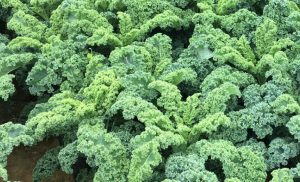 Since kale is rich in antioxidants and fibers, it helps protect the body from diabetes.
Since kale is rich in antioxidants and fibers, it helps protect the body from diabetes.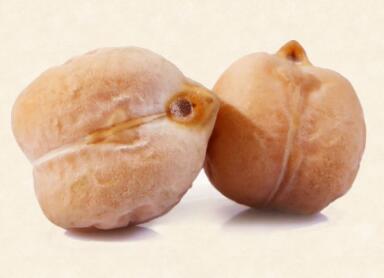
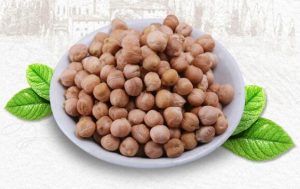 At one time or the other, it is likely you’ve heard someone ask a question of whether hummus is good for your health or not. The answer to that question is an emphatic health. Hummus is truly healthy and good for you for a number of reasons. Not only is hummus natural and plant-based, but it is also 100% dairy free and at the same time vegan and gluten-free.
At one time or the other, it is likely you’ve heard someone ask a question of whether hummus is good for your health or not. The answer to that question is an emphatic health. Hummus is truly healthy and good for you for a number of reasons. Not only is hummus natural and plant-based, but it is also 100% dairy free and at the same time vegan and gluten-free. A hummus dip is great to snack for diabetics. It is rich in both protein and fibers. These nutrients help to absorb sugars from starch thus helping to regulate blood sugar levels. diabetic patients have to keep tabs on their glucose level and keep it fairly stable. The protein and fiber present in chickpeas will help you to maintain your blood glucose at a stable level.
A hummus dip is great to snack for diabetics. It is rich in both protein and fibers. These nutrients help to absorb sugars from starch thus helping to regulate blood sugar levels. diabetic patients have to keep tabs on their glucose level and keep it fairly stable. The protein and fiber present in chickpeas will help you to maintain your blood glucose at a stable level. It’s perfectly okay to indulge yourself in berries of all types whether blueberry or strawberry. The ADA name berries as a superfood for diabetics. They are packed with vitamins, fibers, and antioxidants and they are Low-GI foods as well. You get 62 calories and 16grams of carbohydrates when in just three-quarters of a cup of fresh blueberries. One great way to take them is to add the berries in a parfait for a nutritious dessert or as breakfast by adding alternating layers of the fruits with non-fat yogurt.
It’s perfectly okay to indulge yourself in berries of all types whether blueberry or strawberry. The ADA name berries as a superfood for diabetics. They are packed with vitamins, fibers, and antioxidants and they are Low-GI foods as well. You get 62 calories and 16grams of carbohydrates when in just three-quarters of a cup of fresh blueberries. One great way to take them is to add the berries in a parfait for a nutritious dessert or as breakfast by adding alternating layers of the fruits with non-fat yogurt. Tart cherry is another Low-GI fruit you can add to your diabetes-friendly meal plan. Just a cup of tart cherries contains 19grams of carbs and 72 calories. They are also especially good for treating inflammation. They are also rich in antioxidants which makes them desirable for the treatment of heart diseases, cancer, and other similar diseases. You can purchase fresh, frozen, canned or dried tart cherries. However, many canned cherries and dried fruits potentially contain more sugar than fresh fruits so make sure you check their labels before purchasing them.
Tart cherry is another Low-GI fruit you can add to your diabetes-friendly meal plan. Just a cup of tart cherries contains 19grams of carbs and 72 calories. They are also especially good for treating inflammation. They are also rich in antioxidants which makes them desirable for the treatment of heart diseases, cancer, and other similar diseases. You can purchase fresh, frozen, canned or dried tart cherries. However, many canned cherries and dried fruits potentially contain more sugar than fresh fruits so make sure you check their labels before purchasing them.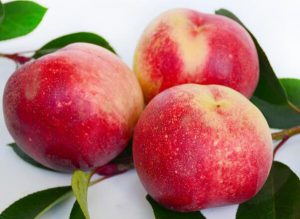 Peaches are not just juicy warm-weather treats they are also diabetes-friendly treats as well. Peaches are rich in Vitamin A, Vitamin C, fiber and potassium. Add a fruity twist to your iced tea with fresh peaches or add some slices to low-fat buttermilk and crushed ice with some ginger or cinnamon for a quick smoothie.
Peaches are not just juicy warm-weather treats they are also diabetes-friendly treats as well. Peaches are rich in Vitamin A, Vitamin C, fiber and potassium. Add a fruity twist to your iced tea with fresh peaches or add some slices to low-fat buttermilk and crushed ice with some ginger or cinnamon for a quick smoothie.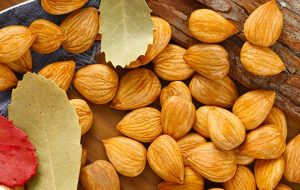 You get just 17 calories and 4 grams of carbohydrate in one apricot which makes it just another brilliant choice for your meal plan. With just four apricots, you get more than half of your required daily intake of vitamin A. They are also excellent sources of fiber as well. You can add apricots to your fruit salad or dice it into your cold or hot cereal breakfast.
You get just 17 calories and 4 grams of carbohydrate in one apricot which makes it just another brilliant choice for your meal plan. With just four apricots, you get more than half of your required daily intake of vitamin A. They are also excellent sources of fiber as well. You can add apricots to your fruit salad or dice it into your cold or hot cereal breakfast.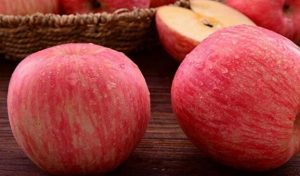 They say one apple a day keeps the physician away. This can also be true even for a diabetes patient. An apple contains 77 calories and 21grams of carbs. They are also rich and Vitamin C and a great source of fiber. Eat all parts of your fresh apples including the skin as they are full of antioxidants and are highly nutritious.
They say one apple a day keeps the physician away. This can also be true even for a diabetes patient. An apple contains 77 calories and 21grams of carbs. They are also rich and Vitamin C and a great source of fiber. Eat all parts of your fresh apples including the skin as they are full of antioxidants and are highly nutritious. Just one orange is enough to supply all of your daily Vitamin C requirement. Another low-GI fruit, oranges contain only 62 calories and 15 grams of carbs. They are also rich in potassium and folate which are important nutrients that help to maintain a stable blood pressure. Asides oranges, grapefruit, and other citrus fruits are also beneficial to health as well.
Just one orange is enough to supply all of your daily Vitamin C requirement. Another low-GI fruit, oranges contain only 62 calories and 15 grams of carbs. They are also rich in potassium and folate which are important nutrients that help to maintain a stable blood pressure. Asides oranges, grapefruit, and other citrus fruits are also beneficial to health as well.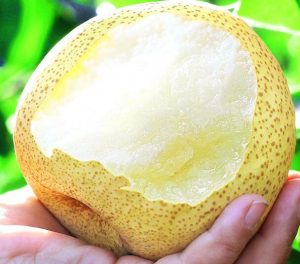 Pears are rich in fiber as well as Vitamin K which means adding them to a diabetes diet plan is a great idea. Another interesting thing about pears is that unlike other fruits, their flavor and texture improve after they are picked. Before stowing your pears away in the refrigerator, you should store them in at normal room temperature first until they are ripe. You can slice one up and add it to your spinach salad for a tasty treat.
Pears are rich in fiber as well as Vitamin K which means adding them to a diabetes diet plan is a great idea. Another interesting thing about pears is that unlike other fruits, their flavor and texture improve after they are picked. Before stowing your pears away in the refrigerator, you should store them in at normal room temperature first until they are ripe. You can slice one up and add it to your spinach salad for a tasty treat.